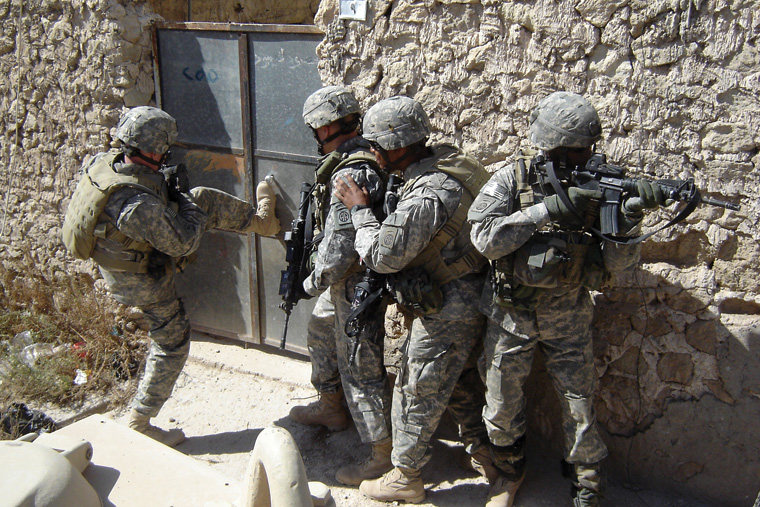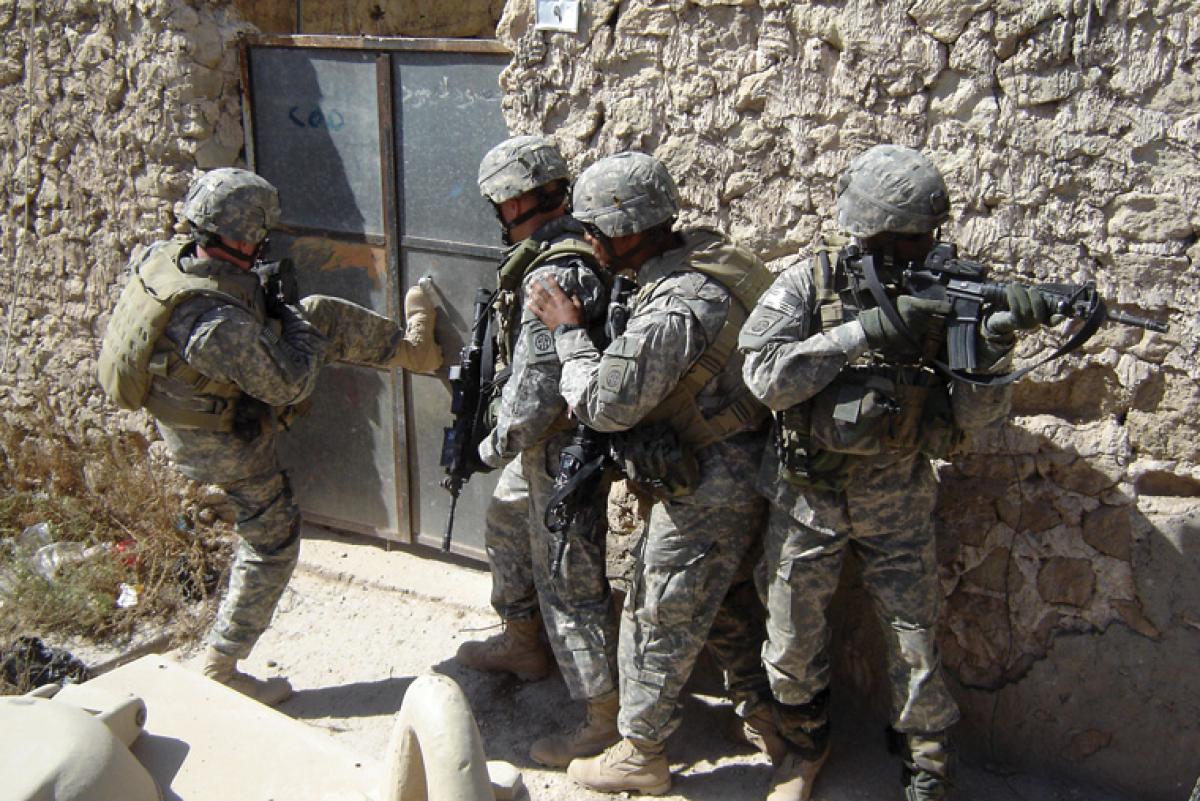
After 14 years of war the ground services, the Army and Marine Corps remain starved of new, cutting-edge, lifesaving matériel, while the Department of Defense and its big defense company allies continue to spend generously on profitable big-ticket programs like planes, ships, missiles, and computers.
Soldiers’ and Marines’ “stuff” today is more Popular Mechanics than Star Wars . . . . [The latter would have been better] in Afghanistan had the nation spent a bit more to give [our forces] an overwhelming, in fact dominant, technological edge over the enemy.
After suffering almost 7,000 dead Soldiers and Marines, the nation still cannot offer an advantage to those who do most of the dying. Our Soldiers and Marines should have gone into Iraq and Afghanistan ready for an unfair fight—that is, unfair in their own favor—at the squad level . . . More Soldiers and Marines might have been saved had . . . body armor been provided before they started on the march to Baghdad in 2003. Too many Soldiers and Marines died from primitive roadside bombs, “improvised explosive devices,” or IEDs, during the early days in Iraq and Afghanistan. The Pentagon weapons-buying bureaucracy was too slow in supplying the troops with explosive-resistant vehicles to protect against IEDs. . . .
Army and Marine Corps infantry squads were outgunned in Vietnam by the North Vietnamese Army’s superior AK-47 assault rifles. One would think that maybe, 50 years later, infantry Soldiers and Marines would be able to fire a bullet costing about 30 cents that did not disintegrate in the air. A $200 aiming device developed for hunters would provide the precision needed to hit a distant enemy target with the same relative precision as that of the rifles used by the Taliban. The Army has yet to buy it.
For more than two-thirds of a century, this country has preferred to crush its enemies by exploiting its superiority in the air and on the seas. Unfortunately, these efforts to win with firepower over manpower have failed to consider the fact that the enemy has a vote. From Mao Zedong to Ho Chi Minh to Osama bin Laden, all our enemies have recognized that our vulnerable strategic center of gravity is dead Americans. It is no surprise that the tactic common to them all has been to kill Americans, not as a means to an end but as an end in itself. Every enemy has ceded us those domains where we are dominant—the air and the sea. They challenge us instead where we are weak: small units, on ground unfamiliar to us but familiar to them.
Memories fade fast. Already the process of denial has begun again, even as smoke still obscures battlefields in the Middle East and South Asia. Politicians on both ends of the political spectrum have called for cutting the ground-force budget as a means of paying down the national debt. The experiences of . . . [the] gallant men should remind lawmakers of their unpaid debt to those who do the dirty business of intimate killing. . . . Our leaders should be asking why the richest nation on Earth could not have done more to help these small infantry units prevail on the tactical battlefield. . . . Please: no more fair fights.
Who are these (mostly) men? A popular rallying cry for those who want to redistribute the nation’s wealth is, “The wealthy 1 percent versus the rest of us!” In American wars there is the other 99 percent, those who do not have to go to war thanks to the 1 percent who serve. A cynic might say that all the good citizens who shake hands with servicemen and say “Thanks for your service” are really saying, “Thanks for doing this so my son can go to graduate school.”
Yet the . . . ones who do the real fighting and dying . . . constitute an even smaller slice of American society than the honored “1 percent.” In fact, the United States’ “intimate killers” account for only about .02 percent of the population. . . .
Since the end of World War II, the dynamics of the dead have changed. Submarines are still dangerous vessels. But the enemy has sunk no U.S. submarine since 1945. The enemy killed a few bomber crewmen over the skies of Korea and Vietnam, but none has died since the Christmas bombing offensive against Hanoi in 1972. The infantry has not been so lucky. In a strange, ironic twist, the proportion of infantry killed at the hands of the enemy now is actually higher, 81 percent. In Afghanistan the proportion of infantry deaths at the hands of the enemy is even greater, 89 percent. Of those, more than 90 percent occurred within 400 meters of a road. Today, some elite small units, like Delta Force and the SEALs, have suffered losses in Iraq and Afghanistan that proportionally approach those of submariners in World War II.
The number of Soldiers and Marines in this fraternity—it is predominantly male, a “band of brothers”—is small. The total number of infantry serving today, Army, Marine, and Special Forces, would not fill FedEx Field, home of the Washington Redskins. Put in its starkest terms: 4 out of 5 of all Americans killed at the hands of the enemy have come from a force that makes up less than 4 percent of men and women in uniform. Not many of our citizens know that.
These men are our warriors. Others serving in uniform are not.
Editor’s Note: This abridged excerpt from Scales on War: The Future of America’s Military at Risk (Naval Institute Press, September 2016) contains minor style changes and the addition of Marines to be consistent with the content from Chapter 1.




